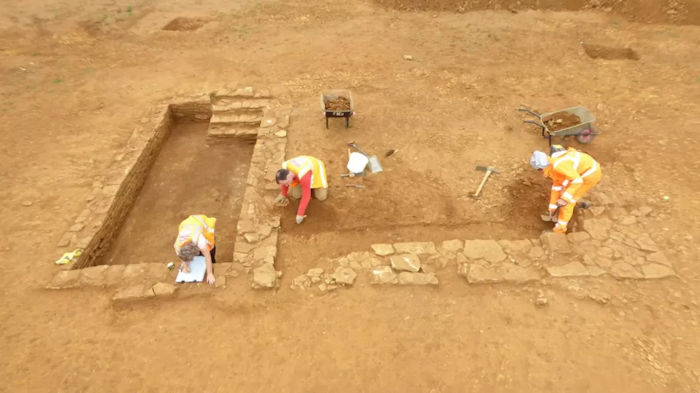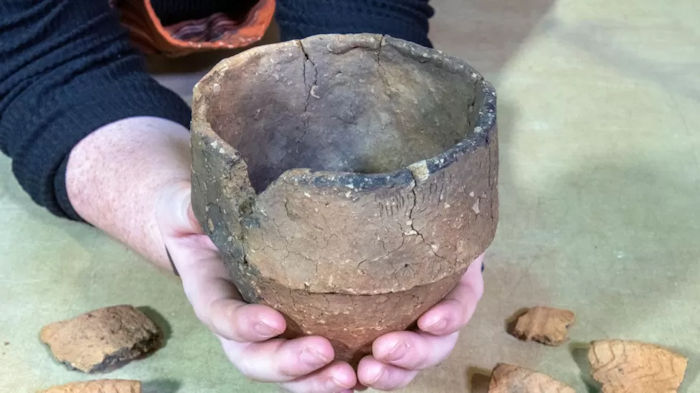Conny Waters - AncientPages.com - A team of archaeologists excavating in the village of Overstone near Northampton, UK, has unearthed an unusual 4,000-year-old stone building. The purpose of this ancient structure is still being investigated, but according to preliminary reports, the site was used for over 2,000 years.
An unusual 4,000-year-old structure was found at the site. Credit: MOLA
This unusual stone building from the Roman period (43AD-410AD), was decorated with elaborately painted plasterwork, possibly a painted ceiling, and contained an underground room.
"Archaeologists said it appeared to have had no functional use, so it was believed it could have been a shrine associated with the nearby spring.
The Bronze Age barrow, a burial site, was found by archaeologists. Credit: MOLA
Scientists were surprised to find ancient empty urns. Credit: MOLA
Pottery excavation. Credit: MOLA
Among the finds was a preserved walnut shell that dates from the Roman era. Credit: MOLA
A 2,000-year-old flower was preserved by the waterlogged soil conditions. Credit: MOLA
Large water tanks were also found and at the bottom of these were 2,000-year-old organic remains of willow tree blossoms, pinecones, walnut shells, and a complete leather shoe," the BBC reports.
The archaeological discovery is most likely a focal point of ritual and religious activity centered around a natural spring.
The Museum of London Archaeology (MOLA) made the find, and scientists have also uncovered Bronze Age and Roman artifacts at the site. The oldest object discovered at the site was a Bronze Age barrow, a form of an ancient burial mound built around 2,000 B.C to 1,500 B.C.
This was "a highly significant place for local ancient communities," Simon Markus, from MOLA told the BBC.
The MOLA researchers said they made yet another curious find at the site. They discovered five empty urns. There were no signs of any ancient human remains in the urns.
"The fact no human remains were placed within the barrow suggests it may have had a more symbolic rather than functional use," Simon Markus said.
See also: More Archaeology News
"He added the site may have been used before and "those pre-existing associations led people in the Bronze Age to pick this site for the construction of a ritual monument."
Archaeologists have been working on the site ahead of new housing development in the village. The research team will now continue to work here, focusing on the environmental remains preserved by the spring.
Written by Conny Waters - AncientPages.com Staff Writer









